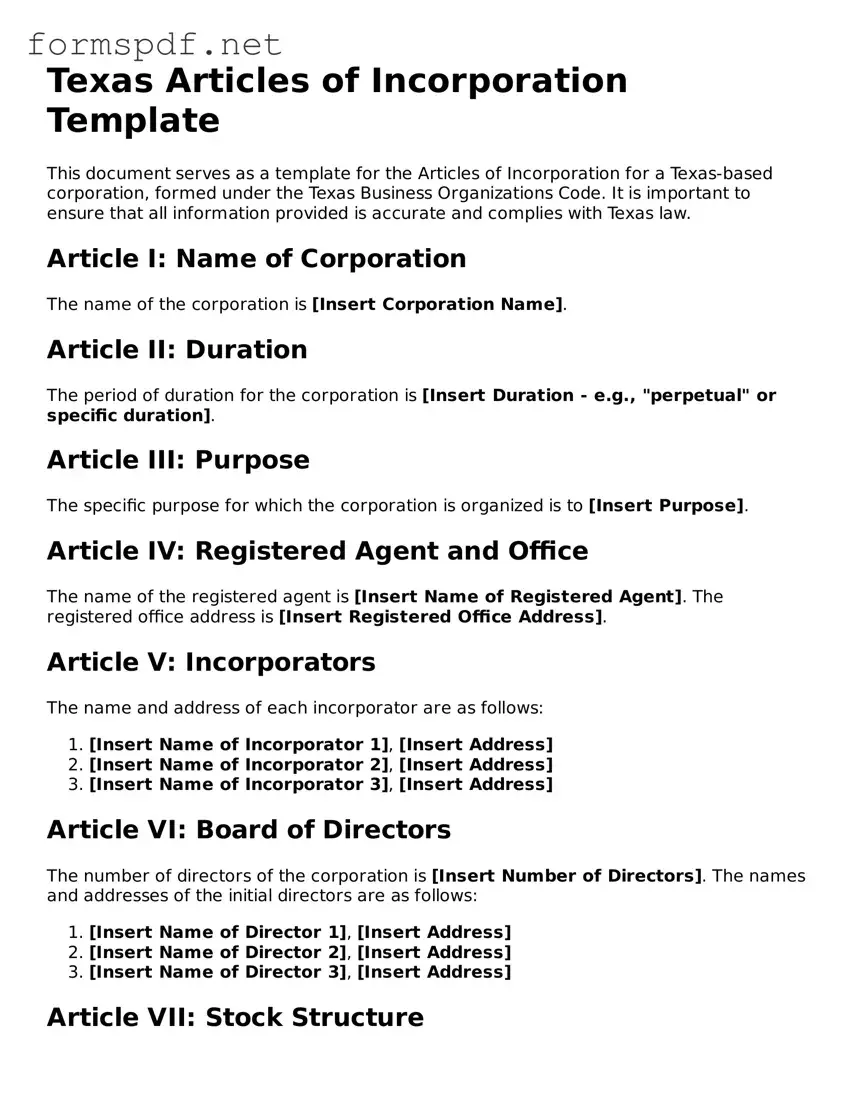Texas Articles of Incorporation Template
This document serves as a template for the Articles of Incorporation for a Texas-based corporation, formed under the Texas Business Organizations Code. It is important to ensure that all information provided is accurate and complies with Texas law.
Article I: Name of Corporation
The name of the corporation is [Insert Corporation Name].
Article II: Duration
The period of duration for the corporation is [Insert Duration - e.g., "perpetual" or specific duration].
Article III: Purpose
The specific purpose for which the corporation is organized is to [Insert Purpose].
Article IV: Registered Agent and Office
The name of the registered agent is [Insert Name of Registered Agent]. The registered office address is [Insert Registered Office Address].
Article V: Incorporators
The name and address of each incorporator are as follows:
- [Insert Name of Incorporator 1], [Insert Address]
- [Insert Name of Incorporator 2], [Insert Address]
- [Insert Name of Incorporator 3], [Insert Address]
Article VI: Board of Directors
The number of directors of the corporation is [Insert Number of Directors]. The names and addresses of the initial directors are as follows:
- [Insert Name of Director 1], [Insert Address]
- [Insert Name of Director 2], [Insert Address]
- [Insert Name of Director 3], [Insert Address]
Article VII: Stock Structure
The total number of shares of stock which the corporation is authorized to issue is [Insert Total Number of Shares] shares. The par value of each share is [Insert Par Value].
Article VIII: Limitation of Director Liability
To the fullest extent permitted by the Texas Business Organizations Code, no director of the corporation shall be personally liable to the corporation or its shareholders for monetary damages.
Article IX: Initial Mailing Address
The initial mailing address of the corporation is [Insert Mailing Address].
Article X: Incorporator Signatures
We, the undersigned incorporators, hereby declare and affirm that we are the individuals described in these articles and that we are authorized to act on behalf of this corporation.
- [Incorporator 1 Signature], [Date]
- [Incorporator 2 Signature], [Date]
- [Incorporator 3 Signature], [Date]
Upon completion, please file these Articles of Incorporation with the Secretary of State of Texas, along with the required filing fee. Ensure compliance with all additional state regulations pertinent to your organization.
